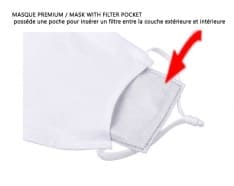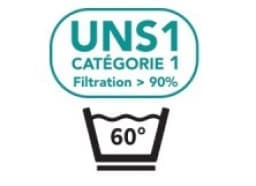Melissa, wife of ocean Nose Mouth Mask
by LouJah
DIY fabric mask tutorials flourish on the canvas. Some hospitals call on textile factories or hospital staff to make fabric masks. But rather to make them yourself, we suggest you make them, and print them with the pattern of your choice, photos, or texts.
#masks #facemasks #mask #fabricmask #fabricmasks #filtermasks #maskwithfilter #sublimationmasks #sublimationmask #polyestermasks #diymask #personalizedmask #filtermask #diy #sublimationprinting #sublimation #facemask #wearamask
To protect against the epidemic of COVID-19 or other viruses, barrier gestures are very effective. Wearing an FFP2, FFP3 or surgical mask is preferable. But in times of crises, masks are available for nursing staff, cashiers ...
This does not mean that you have no right to protect yourself! In order to limit the spread of the virus, it is important to put on a mask so as not to receive postilions from others or to send them on others.
We do not sell patterns for you to make your mask yourself. We suggest that you send the mask already sewn and printed with your montage, creation.
<h2> The cloth masks protect </h2>
"You can wear a cloth mask when you are allowed to go out, but under several conditions. I think the problem is the misuse of masks. People use them without knowing how to put them on and how to remove it. You must follow a procedure to avoid contamination, ”says Pr. Odou, mentioning the risk of putting his mask on his chin, then sliding it back on the nose, constantly touching the filter area as well as his face.
Prof. Odou adds that the mask must be washed systematically once it is removed and at least 30 minutes at 60 degrees to be sure to destroy the contaminating agents. The World Health Organization (WHO) notes that it is necessary "to remove the mask without touching its front part". You must clean your hands before and after handling your mask with a hydroalcoholic solution or with water and soap and wear the mask so that your nose and mouth are covered.
Design Melissa, wife of ocean Nose
The oceans cover more than 70% of the Earth's surface and contain 97% of the planet's water. They are home to an incredible diversity of life, from tiny plankton to enormous whales. The oceans play a critical role in regulating the Earth's climate and weather patterns, and they are a major source of food and livelihoods for people around the world. For all these reasons, it is essential that we protect and preserve our oceans. Unfortunately, the oceans are under threat from human activity, including pollution, overfishing and climate change. These threats jeopardize the future of our oceans, and we must all do our part to safeguard them for future generations. By understanding the importance of the oceans and taking action to protect them, we can ensure that they remain a vital part of our planet for years to come.














